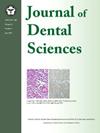Presence and distribution of voids after using the single cone obturation technique with different sealer placement methods in canals with an isthmus
IF 3.4
3区 医学
Q1 DENTISTRY, ORAL SURGERY & MEDICINE
引用次数: 0
Abstract
Background/purpose
The obturation of canals with irregular structures is still a challenge for single cone obturation technique (SC). The purpose of this study was to evaluate the presence and distribution of voids using SC with different sealer placement methods in the canal with a simulated band-shaped isthmus.
Materials and methods
3D-printed root canal models with band-shaped isthmuses were randomly divided into four groups according to different obturation methods. Group 1: sealer placement by single cone passively (SCP); Group 2: bi-directional spiral-supported sealer placement (BS); Group 3: ultrasound-supported sealer placement (U). Group 4: vertical compaction obturation (VC). In each group, 10 of 14 models were sliced and the remaining four were scanned by micro-CT. The percentage area of voids (PAV) and the percentage volume of voids (PVV) of fillings were calculated.
Results
At all slice levels, using BS and U to support sealer placement reduced voids with an average PAV of 21%, and in the VC and SCP groups were 33% and 45% respectively. Based on the micro-CT scans, nearly half of the porosity decreased by the BS and ultrasound in the isthmus with PVV of 25% and 29% respectively, compared with 46% in the SCP group. However, in the main canal, when the PVV was 22% in the SCP group, the porosity decreased to 14% in the U group and 18% in the BS group.
Conclusion
Bi-directional spiral or ultrasound-supported sealer placement can improve the performance of single cone obturation in canals with an isthmus.
在有峡部的牙槽中使用单锥封堵技术和不同的封堵剂放置方法后,空隙的存在和分布情况
本文章由计算机程序翻译,如有差异,请以英文原文为准。
求助全文
约1分钟内获得全文
求助全文
来源期刊

Journal of Dental Sciences
医学-牙科与口腔外科
CiteScore
5.10
自引率
14.30%
发文量
348
审稿时长
6 days
期刊介绍:
he Journal of Dental Sciences (JDS), published quarterly, is the official and open access publication of the Association for Dental Sciences of the Republic of China (ADS-ROC). The precedent journal of the JDS is the Chinese Dental Journal (CDJ) which had already been covered by MEDLINE in 1988. As the CDJ continued to prove its importance in the region, the ADS-ROC decided to move to the international community by publishing an English journal. Hence, the birth of the JDS in 2006. The JDS is indexed in the SCI Expanded since 2008. It is also indexed in Scopus, and EMCare, ScienceDirect, SIIC Data Bases.
The topics covered by the JDS include all fields of basic and clinical dentistry. Some manuscripts focusing on the study of certain endemic diseases such as dental caries and periodontal diseases in particular regions of any country as well as oral pre-cancers, oral cancers, and oral submucous fibrosis related to betel nut chewing habit are also considered for publication. Besides, the JDS also publishes articles about the efficacy of a new treatment modality on oral verrucous hyperplasia or early oral squamous cell carcinoma.
 求助内容:
求助内容: 应助结果提醒方式:
应助结果提醒方式:


